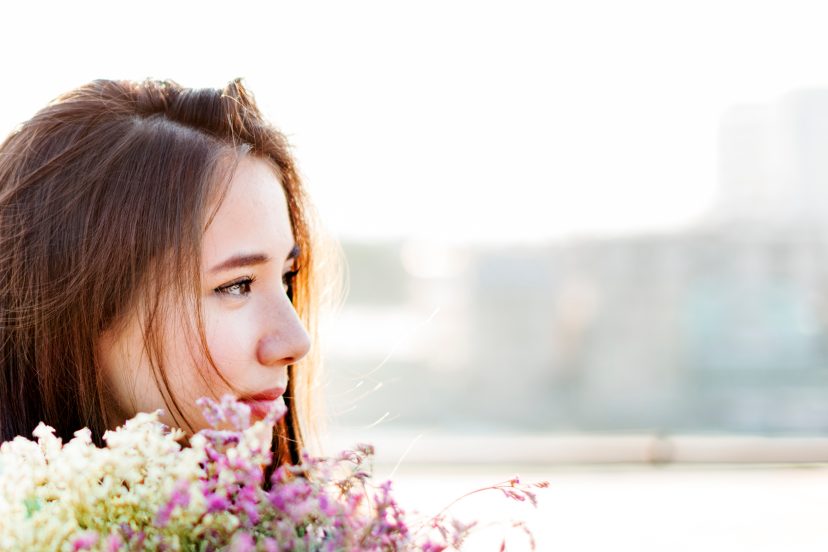How to Choose Your First Prime Lens
Why Prime Lenses Rock for Portraits
Sharpness and Image Quality
Let me tell you, once you go prime, you often don’t go back. Prime lenses typically offer sharper imagery because of their simpler optical design. That means you’re getting crisp detail where it counts—right on the subject.
Better Low-Light Performance
Those wide apertures (like f/1.8 or f/1.4) let in tons more light. This means cleaner shots in dim environments without noise—so portraits stay glowing, not grainy.
Weight, Size, and Simplicity
Primes are often lighter, more compact, and easier to carry. Less gear, less fuss—just you, your camera, and that lovely lens.
Understanding Bokeh: What It Is and Why It Matters
Defining Bokeh – The Aesthetic Blur
Bokeh is the pretty blur behind your subject, making them pop. It’s not just blur—it’s how that blur looks. A wide aperture achieves a shallow depth of field, creating that dreamy background. Wikipedia
Good vs. Bad Bokeh: What’s the Difference
-
Aperture blade shape and number – More blades, and rounder ones, shape smoother out-of-focus highlights.
-
Lens optical design and aberration control – Some lenses render smooth, creamy bokeh; others create harsher, distracting shapes or uneven edges.
Key Factors to Consider When Choosing Your First Prime Lens
Focal Length: What Suits Portraits Best?
-
50 mm – Versatile and natural, especially on full-frame (classic “nifty fifty”).
-
85 mm – Great for flattering headshots with strong separation.
-
35 mm – Ideal if you want environmental context around your subject.
Maximum Aperture: The F-Number That Frees Your Bokeh
The wider (i.e., smaller f-number), the shallower the depth of field and the smoother your background blur will be.
Compatibility with Your Camera System
Make sure the lens fits your mount, autofocus system, and sensor size. It’s a waste to fall in love with a lens that won’t work long-term.
Budget: Balancing Price vs Performance
Plan on investing in something good but not necessarily the most expensive. You’ll learn what bokeh style you love and perhaps upgrade later.
Recommended First Prime Lenses for Portraits & Bokeh
50mm f/1.8 – “Nifty Fifty” Starter
Affordable, sharp, and lightweight. It’s the bread-and-butter starter lens for many.
85mm f/1.8 – Classic Portrait Sweet Spot
Nicely compresses faces, isolates subject with creamy backgrounds—ideal for expressive portraits.
35mm Options (for environmental portraits)
Great for full-body shots or surroundings—gives context while still offering attractive separation.
Specialty Options with Curl or Apodization Filters
Lenses like the Minolta/Sony STF or Fujinon XF 56mm with APD filters produce ultra-smooth “soap-bubble” bokeh when you want something special. Wikipedia
How I Personally Choose My Own Prime Lens
Defining My Portrait Style
Am I going for tight headshots, full-body environmental shots, or something in-between? Your style drives the focal length choice.
Trying Before Buying (Rentals, Reviews)
I love renting or checking video reviews—seeing bokeh and autofocus in action helps more than specs can.
Hands-On Feel and Focus Experience
Comfort, focus rings, and autofocus speed matter. Try it in hand to see if it feels right for your shooting style.
>>> See TODAY’s deals on prime lenses HERE <<<
Tips for Mastering Bokeh in Practice
Get Closer, Open the Aperture, Add Separation
Move closer to your subject, keep that aperture wide, and back away from the background. Boom—instant bokeh.
Watch Your Background Highlights & Light
Little glints or fairy lights in the background dramatically enhance that dreamy blur. Keep them around for extra magic.
Focus on Eyes—Precision Matters
With shallow depth of field, one millimeter of focus shift can lose the entire shot. Nail those eyes.
Common Pitfalls to Avoid
Overemphasis on Ultra-Fast Aperture Without Skill
Sure, f/1.2 is sexy—but unless you can nail focus, you might just get more blur without clarity.
Ignoring Focus Speed or Autofocus Reliability
Some primes are slower or hunt in low light. For portraits, you want confident, accurate focusing.
Overlooking Build Quality or Future Lens Plans
Think about weather sealing, filter options, or if you might want to add a zoom or macro later. Build that kit with growth in mind.
Conclusion
Choosing your first prime lens is like picking your creative companion—it shapes the flair of your portraits and bokeh vibes. Start by defining your style, balancing focal length, aperture, and budget. Try lenses before buying, and always consider ergonomics and autofocus feel. With the right lens in hand—especially something like a 50mm f/1.8 or 85mm f/1.8—you’ll begin crafting portraits that truly stand out with gorgeous blur, depth, and personality.
>>> See TODAY’s deals on prime lenses HERE <<<
5 FAQs About Choosing Your First Prime Lens
-
Which prime lens is best for portrait bokeh on a budget?
The 50 mm f/1.8 is often the best balance of affordability, image quality, and beautiful bokeh. -
Is 35mm good for portraits?
Absolutely—for wider environmental portraits, 35 mm gives context while still allowing pleasing background blur. -
Will a higher aperture (like f/1.2) always be better?
Not necessarily—while wider apertures offer shallower depth of field, they also require sharper focus and are pricier. f/1.8 often hits the sweet spot. -
How does focal length impact background compression in portraits?
Longer focal lengths (like 85 mm) compress the background, making blur appear more pronounced and the subject more isolated. -
Should I upgrade lenses later or stick with one prime?
I recommend starting with one versatile prime, learn its strengths, then expand as your style and needs evolve.
Further reading here
Art of Portrait Photography: Master Techniques for Stunning Shots




